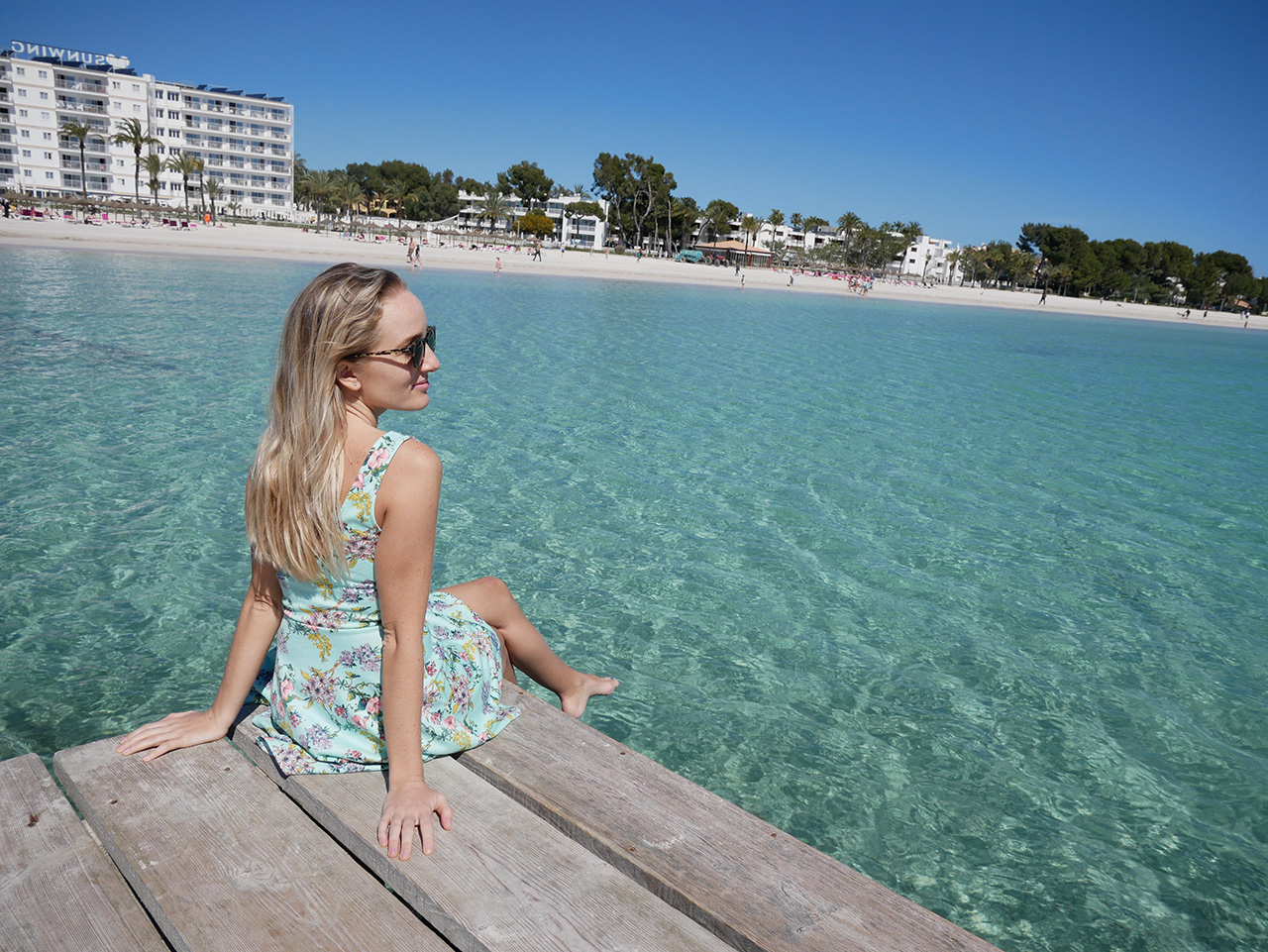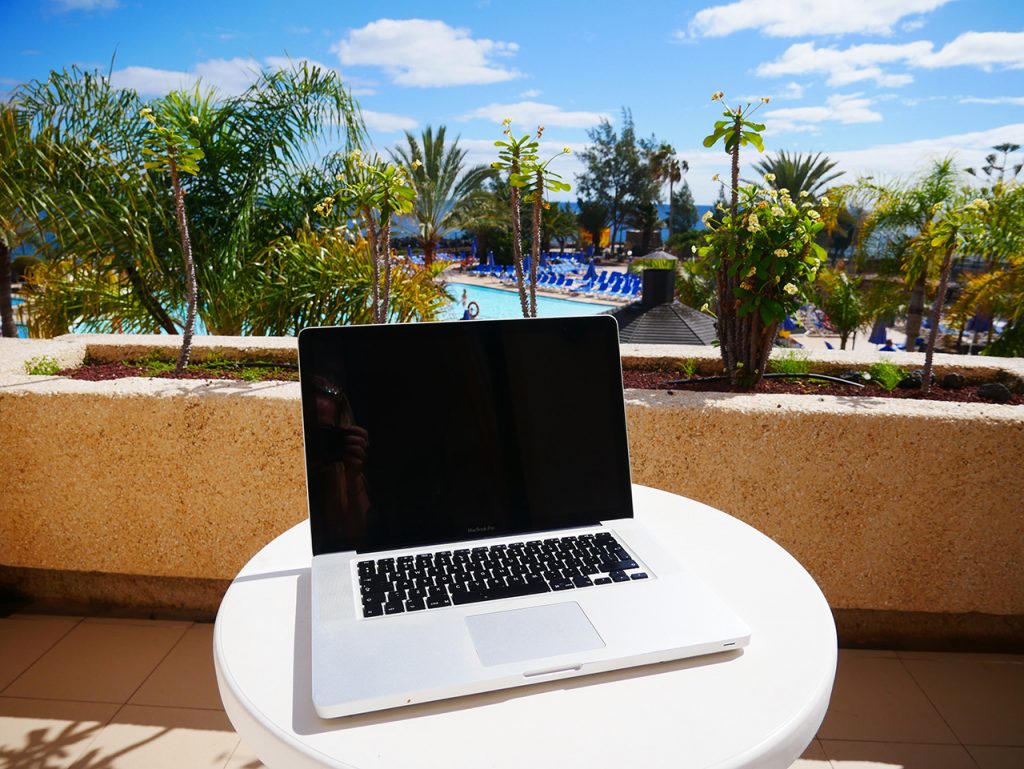Want to learn how to become a travel blogger? Read my free guide lessons I’ve learned from a decade of travel blogging. I’ve made all the mistakes so you don’t have to!
So you’ve seen travel bloggers living it up on trips abroad and you want a slice of the action?
I’ve been a professional travel blogger now for 10 years and this job has taken me all over the world. I’ve been fortunate enough to be invited on press trips to exotic places such as Madagascar, Iceland, Japan and China. I’ve flown business class several times on the airline’s dime. I’ve eaten in some of the world’s best restaurants and done things that some people never get to do in a lifetime.
To many of my friends, I appear to be living the dream. They browse my Instagram feed and see pictures of beaches, cocktails and fancy hotel rooms and probably think I’m on a constant vacation.
But the thing that people don’t see? All the hard work that goes behind it.
Between the perfectly posed Instagram photos bloggers are actually doing a hell of a lot. We’re up till late writing blog posts, editing pictures and answering emails. A trip abroad is never really a “vacation” because we’re always working. Heck, sitting here and writing this post is going to take an entire day and I’m not actually being paid to do it. It’s a lot of work and there’s never a guaranteed pay check at the end of each month.
You see, that’s a common myth with blogging: that travel bloggers are paid to travel. Yes, nowadays the top influencers are starting to be paid day rates by brands. Particularly in the lifestyle niche. But a lot of the times we’re not being paid to travel. We’re being paid for the work that we produce. Or perhaps we’re not being paid at all and getting a free trip. Travel blogs are usually monetised by advertising, just like magazines or newspapers are.
Sometimes when I’m feeling a sense of digital overload, I wonder if I’m doing the right thing. But then I remember the alternative – probably a desk job – and I remember why I’m doing this: freedom. Freedom to be my own boss, freedom to have my own company, freedom to go wherever I want, whenever I want. I wouldn’t swap that for the world.
So, do you still want to become a travel blogger? If the answer’s yes, here’s everything I’ve learnt, condensed into one handy guide:
Do you really want to be a travel blogger?
The first thing to ask yourself is, do you really want to be a professional travel blogger, or do you just want to travel all the time? If it’s the latter, then you may want to have a rethink. Taking an extended trip abroad can make you think “Gosh, I want to do this all the time!” but having a long vacation or gap year is very different to actually working while travelling.
If you really want to be a travel blogger you need to be motivated and have lots of self discipline. The key to success is consistency and treating your blog like a business from day one. Can you commit to writing blog posts every week? Can you keep up with posting on social media and answering emails? Are you prepared to network and pitch your ideas to online publications?
Building a successful blog takes lots of time and it isn’t going to happen overnight.
How to start a travel blog
So now we’ve got that out of the way, it’s time to start your blog.
Choose your domain
First you’ll need to pick a name and a niche. Yes, you’re going to write about travel, but what is the purpose of your blog? Do you want to provide budget travel hacking tips? Do you want to write about off-the-beaten-track travel? Are you going to be the solo female travel guru? Would you prefer to write about luxury trips and perhaps incorporate fashion?
Tip: It’s best to pick something that will stand the test of time. Many travel bloggers start out writing budget backpacking blogs but then their travel style changes and they see all these other bloggers getting luxury hotel stays and think…”Hmmm, maybe I shouldn’t be writing about budget travel after all! Maybe I should have started a luxury blog!” Carefully think about the name of your blog as well as you’ll be stuck with it!
Get web hosting
Once you’ve figure out your domain name, you’ll need web hosting. I’m going to recommend Siteground because from personal experience, they have the best customer service out there. All my websites run on Siteground because they load quickly and I haven’t noticed any outages. I’m easily able to sort out any problems by using the live chat feature on the website and if I need to cancel services, they’re usually quick to give refunds and they’re never pushy. I’ve tried a few different web hosting providers and Siteground really beats the competition hands down. Best of all, if you plan on running more than one website, you can easily add more hosting accounts within your user interface, all on different IPs.
Pick your WordPress theme
I’m going to assume you’re planning to use WordPress because why use anything else? Most hosting providers will offer one-click installs for WordPress to make things as easily as possible. There’s no need for a web designer these days as there are so many ready-made themes on the Internet. Themeforest has a huge collection of WordPress themes; this site currently uses the theme “Bridge”.
Write all posts with SEO in mind
SEO is short for “Search engine optimisation”. Whenever you write a post you should be thinking “What would an ordinary person type into Google when researching this topic?” Whatever you come up with, that’s what you should title the post. Of course, there are plenty of tools to help too. I use Ahrefs, which allows users to analyse keywords and most importantly, the competition.
Moz is also another great tool for researching keywords, backlinks and the health of websites. Longtail keywords (longer phrases) are definitely better to target. As an example, I could have just written a post called “How much money do I need to travel America?” but there’s competition out there. So I titled the post, “How much money do I need to travel America for 3 months?” See the difference?
This post could have been titled, “how to start a blog” but the competition is fierce. So I narrowed it down, used Ahrefs to figure out the best keyword and ended up with “How to become a travel blogger.”
When writing a blog post you want to make it the best possible resource on that topic in order to outrank the competition. If you want to appear at the top of the search results, you’ll need to write something incredibly detailed, incredibly long and incredibly useful. That’s why this post is over 3,000 words and not 500! If you’ve found this post, it worked, didn’t it?
Write great content
With this in mind, the most important part of blogging is writing great content that users will love to read. You don’t have to be the world’s best wordsmith or use flowery language. You just need to deliver information in an engaging way. Nobody wants to hear about what you had for breakfast or the mundane details of your trip. There used to be a common misconception that a “blog” was a diary but really blogs these days are more like online magazines. Write great content and the traffic will come.
Think like a business owner
You are not just a blogger, you are a business owner and so investing in your business is key. I used to make the mistake of spending what I earned but then I realised that if you want your business to grow, you have to invest your money back into it. Bloggers have to deal with so many tasks; everything from link building and content writing to social media marketing and dealing with advertisers. Some of these tasks you will have to outsource. Sometimes you’ll have to invest in expensive tools like Moz in order to improve your SEO. The point is, you have to treat your blog like a well-managed business and not just an ad hoc hobby.
Promote yourself on social media

Once you’ve set up your blog and started writing you’ll need to set up social media accounts for your site. Twitter, Facebook, Instagram and YouTube are the essentials. Snapchat is dying a death and Pinterest really works for some but it’s not something I’ve ever focused on. Here’s what I’ve learnt about these social networks:
Instagram – It’s best to post to Instagram at least once per day. Two max. Anything over that becomes excessive, so leave the rest for your Instagram stories. In order to grow your Instagram account there are growth tools such as Gramista, Social Upgrade and Social Drift that will automatically like and follow other users in order to increase engagement. Make sure you post only your best photos and keep them as light and bright as possible. Most bloggers use DSLR cameras to take their photos and edit with Lightroom presets before posting to Instagram.
Twitter – With Twitter it’s OK to post more frequently, say 4-5 times per day. You’ll want to @mention brands wherever possible and jump on popular hashtags. Some Twitter users like to take part in Twitter chats in order to increase followers and build a community.
Facebook – Facebook really loves videos so if you plan to make vlogs, don’t share your video from a third party source like YouTube. Upload the video directly to Facebook and you’ll get far more views. What I love about Facebook pages is that Facebook ads really do work. It’s worth paying a little bit of extra cash to promote a post and reach your target audience, particularly if you’re running a competition. I post to Facebook less regularly but when I do I usually post a mixture of blog post links or images from my travels.
Link build
You’re not going to appear at the top of Google if you don’t have a ton of links pointing to your site. In order to get links, I would start out by searching for “travel blog directory” on Google and doing link exchanges with other bloggers. It works. But the best juice will come from non-reciprocal links, so after that you’ll want to start guest posting and commenting.
While commenting links tend to be “no follow”, they do still really work. I have noticed that Moz really values commenting when assessing Domain Authority.
Guest posting is the #1 way to build links though. Pitch your guest posts to other blogs and major online publications in order to get backlinks – the more authoritative the site, the better. A link from BBC, Huffington Post Forbes is going to be better than a link from a random blog. If you’re struggling to get links you can always buy gigs from sites like Upwork where people will guest post to other websites on your behalf.
Network at events
The key to getting your name out there is by attending networking events. I would highly recommend attending Travel Massive, which has chapters in cities all over the world. Sign up the chapter in your nearest city and attend one of their regular meet ups.
Next up you’ll need to start attending conferences in order to meet with PRs, tourism boards and travel companies. These are the people who will be able to send you off on exotic press trips abroad or invite you to review luxury hotels. Before you go you’ll want to have business cards printed – Moo is definitely the most popular choice for printing.
The best conferences for travel networking are:
ITB Berlin, World Travel Market, Travelcon, Traverse and TBEX.
Any one of these travel conferences will be filled with travel bloggers just like you. It’s a great way to make new friends, attend lots of parties and do plenty of networking for your new blog.
Decide your monetisation strategy
Once you’ve started building some buzz around your blog, the next step is figuring out how you’re going to make money blogging. There are three main ways of making money: working with brands, inserting affiliate links and making products.
Working with brands may seem like a really attractive way to make money. Receiving free products and getting paid to create content provides an instant source of income. The downside is that it’s a bit soul sucking as you feel like you’re not being truly authentic and dealing with brands is also pretty time consuming. There’s all the back and forth emailing, the drawing up of contracts and the time that goes into travelling/producing content. When you’re being paid to promote a product or place, do you feel like you can be really, really honest?
That’s why some bloggers decide to go down the other route of passive income – i.e. creating income streams that will make money while you sleep. If you write a post and insert affiliate links into it you may not get money instantly, but if the post becomes popular you may get regular commission without lifting a finger.
Make products
So what kind of products can you make? Well, most travel bloggers seem to create eBooks or offer tours. Some bloggers also create eCourses on how to become a travel blogger showing you all the tips and tricks. I’ve noticed a few Instagrammers selling Lightroom presets or creating their own bikinis, suitcases and other travel products. Whatever you do, you need to be selling something. Think of your blog not just as a free source of information but as a shop window; a vehicle to sell something.
Work with brands
If you want to work with brands then you’ll need to be attending lots of conferences to get your name out there and network with PR officers of the brands you like. As your blog grows you’ll often find that brands will start approaching you, perhaps for sponsored blog posts or sponsored Instagram posts, or for larger projects like video commissions and social media campaigns.
The tricky part about working with brands is that you’ll sometimes have to deal with a lot of requirements and agree to various terms in order to make sure the client is happy. I know some bloggers create their own contracts, although usually I find that the brand creates a contract from their end.
Insert affiliate links
This is time consuming but totally worth it in the long run. A lot of the links you see on the Internet are actually affiliate links, which mean that if you click on them and purchase something from the retailer, the person who wrote the post will get a commission from the sale. If you want to make commission from affiliates it always works best if you write really detailed how-to guides and promote brands that you love. Reviews work well too but they need to be really detailed.
In order to insert affiliate links you’ll need to sign up for affiliate platforms such as CJ Affiliate or Rakuten Linkshare. Once you have an account you can sign up for the programs of your favourite brands and then copy special tracked affiliate links to insert into your posts. If that seems too exhausting, you also have the option of using tools like Skimlinks, which do all the heavy lifting for you. Instead of having to go in and get codes every time, Skimlinks will automatically turn your ordinary links into affiliate links.
Set up an email list
For a long time, I made the error of not having an email list. Yet email lists are the number 1 tool for marketing products and making affiliate sales. As soon as you start your blog, set up an email list with Mailchimp or Aweber and encourage people to sign up to it. Put a sign up form in your sidebar and offer a free guide to entice people to join.
Be your own PR machine
Lastly, if you want to be big, you have to think big. All the top bloggers don’t just sit there and let the press come to them. A lot of them pitch their story to sites like Business Insider or Forbes in order to have publicity out on the web. More publicity means more traffic to your website. The aim is to get yourself on all the Top 10 Travel Blogger Lists and enter as many travel awards categories as possible. Many will let you nominate yourself, so don’t be shy!
I hope you found this guide useful in some way! If you’re ready to start your first travel blog, get your domain name and hosting at Siteground and start writing!

